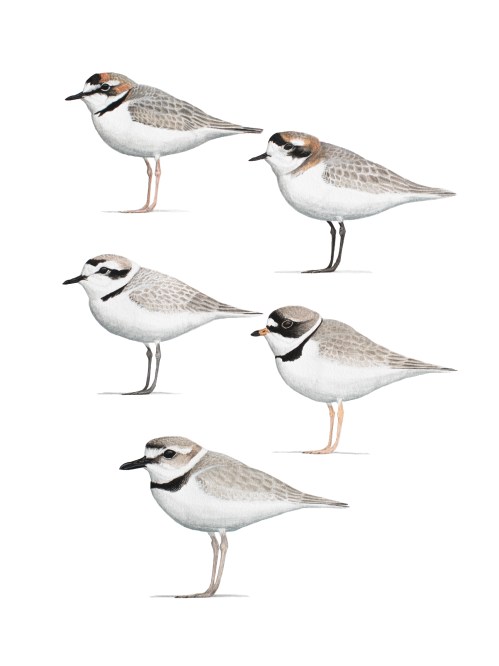
I’ve written about the use of photography to aid in re-sighting banded birds before, but I’d like to return to the subject and explore fully the idea that metal bands and color tags “ruin” a beautiful photograph of a wild bird.
Observing the Red Knot – Calidris canutus on it’s breeding grounds in Alaska is meaningful. At least, it is meaningful to me.
In Alaska there exists a small portion of the Red Knot population that breeds in the interior highlands of the Seward Peninsula and portions of the North Slope tundra. Any satellite portion of the distribution of a given species interests me greatly. So, in planning my summer in Western Alaska, I put high on the list to find and experience the Alaskan breeding Red Knot, subspecies roselaari.
There are folks here on the peninsula engaged in a demographic study of this Calidrid. I haven’t been able to make contact with these researchers yet, but as far as I understand it in the small bird world here, the time is coming. I’m interested to hear their thoughts and ideas considering the species. Until then, I have only the knowledge of what I observe myself, and what I can read.

Do the metal band and sea foam green leg tag take away from the beauty of this bird?
I found an individual the other morning, high on a hillside in the very western parts of mainland Alaska. Immediately I noticed the colored leg tag. As a young researcher, my resolve to photograph the bird strengthened with my desire to aid my peers with a “re-sight”. As you can see, I was successful to a degree. I came away with photos of the bird, and it’s identification tags.
The experience and resulting photos brought an issue to mind. Many bird photographers I have met and know dislike the identification jewelry because it tarnishes an otherwise natural and beautiful image. After capturing photos of the bird, I was left contemplating the idea.
I’d like to offer some of my thoughts as a young and aspiring ornithologist. As I’ve already stated, I love finding and photographing birds with color tags. To me, it is akin to trapping the bird and recording its location and identity, with the added benefit of no stress to the bird. Clean research! At least after the initial attachment of the tag.

On the other end are the photographers (I’m in part on this end as well, I confess) that are of the opinion that the tags diminish the quality of the images they are after. They work to capture natural images of birds, void of the tarnish of human interaction.
I’m sympathetic to the photographers view, but I believe that the proportion of individuals that we are able to outfit with these identification tags are minimal, and the chance of interacting with them again is remote. So, when a photographer has a subject that happens to have a tag, it ought to be viewed as fortuitous and an opportunity to learn about the bird and aid research efforts.
I photograph birds for many different reasons, but high on the list is to learning. Being something of an artist, I understand the drive to capture the most aesthetically pleasing image, but I propose instead a new avenue for the aesthetically driven. This is the art of bird study, to capture an image that is both beautiful and informative. This image would have the natural beauty and allure of the bird, but also the context of its interactions with humanity, holding in its information tag a history unique to the individual and the potential at snapshots of a story as beautiful as any image anyone could gather.






